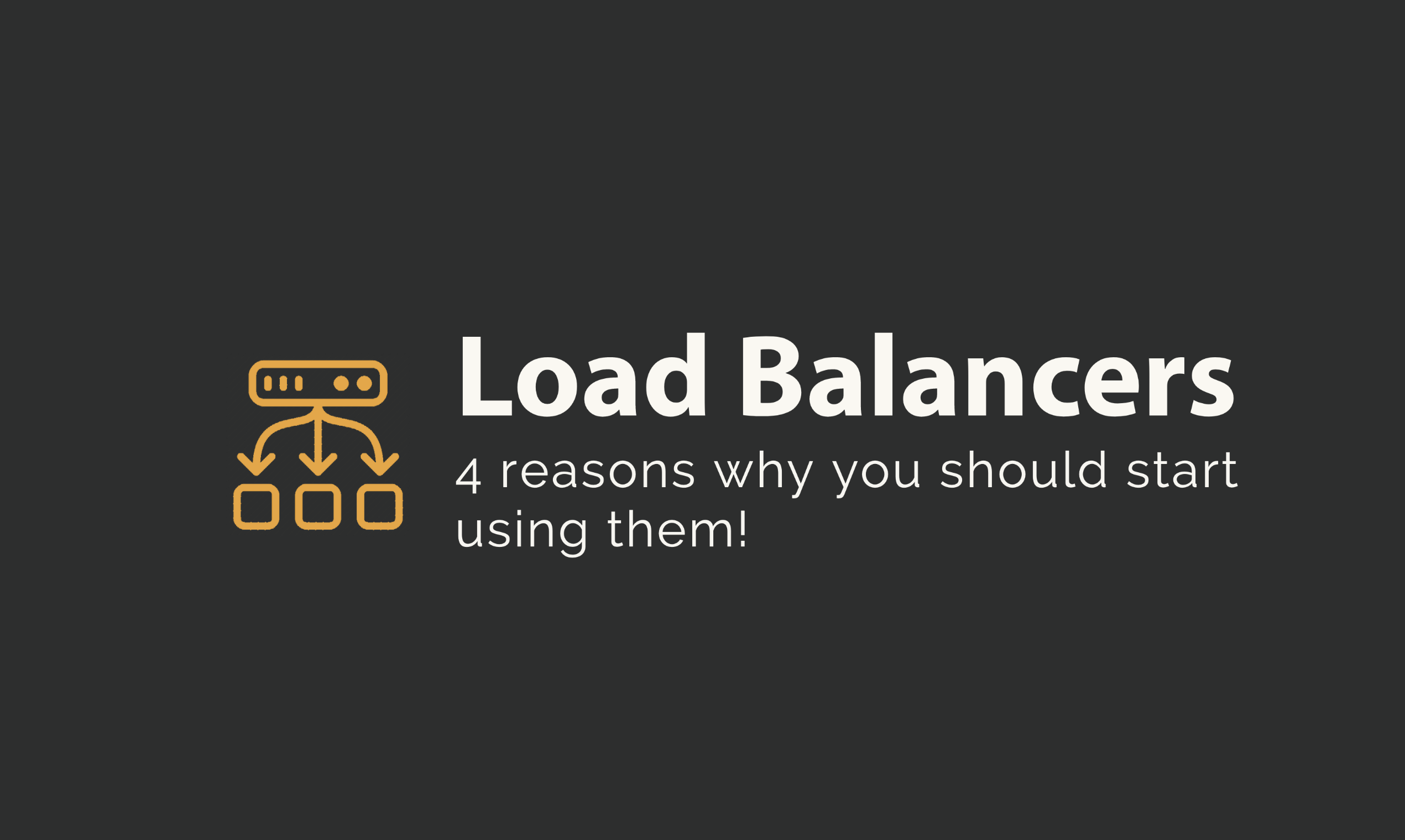
Before we dive into why you should start using load balancers, let us first briefly understand what is load balancing.
What is load balancing?
Load balancing is a process of distributing incoming network traffic to a group/pool of backend servers. In simple terms, load balancers sit directly in front of your backend servers and make decisions on routing all inbound traffic to the backend servers. This ensures efficient capacity utilisation of resources.

Load balancing as illustrated above can be implemented using both hardware or software(virtual) based load balancers. In a future article, I will discuss on the different types of load balancers.
Why you should start using load balancers?
Here are at least 4 reasons why you should start using a load balancer right away –
1. Improve Performance
As your online business grows and the site traffic increases, you feel ecstatic with your success in luring in more customers! As more and more people start interacting with your web application, your server is now doing a lot more work than before.
This is actually a very crucial junction for your business! As more and more customers keep pouring into your site, the server begins to get slower with the added network load. You may think “it is not a big deal if the site loads 1 or 2 seconds slower. Well what harm can it possibly do?“. 🤨
Well look at the following stat shared by Amazon —
Amazon has calculated that a page load slowdown of just one second could cost it $1.6 billion in sales each year.
FastCompany
If those stats are not compelling enough, just imagine yourself going to another website and waiting for 5 seconds. Well I don’t know about you but I surely won’t wait for 5 seconds for a page to load… 🙏🏼
The general consensus is people are very busy and impatient. Everyone simply wants to consume content quickly. It is nowadays expected that a site will load up in less than 2 seconds. Well, if it doesn’t then its not worth it for the visitor. Similarly even search engines will start ranking your site negatively for being slow. Yes, thats the reality of the tech space right now!
Using load balancers today, you can efficiently split the added load between multiple servers to keep the performance of your site top notch.
2. Adopt Scalability, Cost Effectively
One of the biggest challenges an online business faces is scaling the production server to meet the increased traffic. One solution could simply be increasing the processing power of your existing server. This is true and depending on your solution architecture this may actually work. However, vertically scaling the size of the server is definitely not the most cost effective solution.
With the aid of load balancers, you can effectively split the site traffic horizontally between two or more smaller sized backend servers. This will reduce the load on each individual backend server without exponentially increasing the cost.
You can effectively keep adding or removing servers to the load balancer to match up with the site traffic seamlessly.
3. Handle Failures Efficiently
Imagine during holidays you have given a promotional offer and it has went viral! Good news right? Now you must ensure that your server is able to handle the traffic that it will be bombarded with!
Being able to successfully handle the network traffic will not only affect the promotional campaign but also your whole brand. Imagine a website which crashes or is slow being associated with your brand? Will it be worth it? I think not!
If your network architecture employs a load balancer, you will have the luxury of scaling and easily adding more backend servers before launching a campaign. This will definitely help manage failures, reduce server downtimes and improve site performance during a sudden spike of web traffic! Nowadays, all modern cloud service providers allow you to configure load balancers to autoscale based on pre-configured scaling policies.
4. Cater To Different Geographic Locations
If your business focuses on providing content to different geographic locations then you must think about how fast the site loads up at different locations. Let’s say, your server is hosted in Singapore and you have a client trying to access your site from London.
How do you expect the server to respond? The server will most like respond with slowly . This is simply because of the distance between the two locations and the network routing it needs to navigate through.
To tackle such scenarios, it would be wise to have at least one backend server located in each geographic location. Then, if a client tries to access your site, the load balancer will be able to forward the inbound requests to the closest geographically located server. Thus reducing the page load time for the client!
These are some of the reasons for starting to have a load balancer in your network architecture. Hope this article has been helpful to you guys!
Until next time!